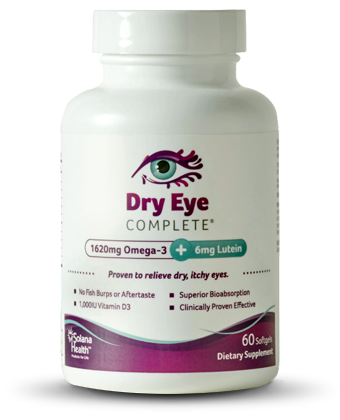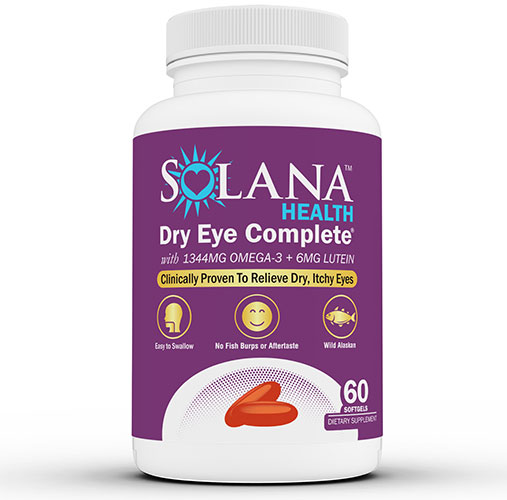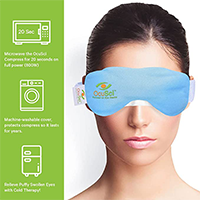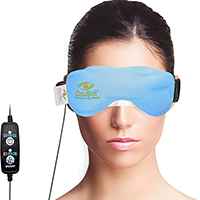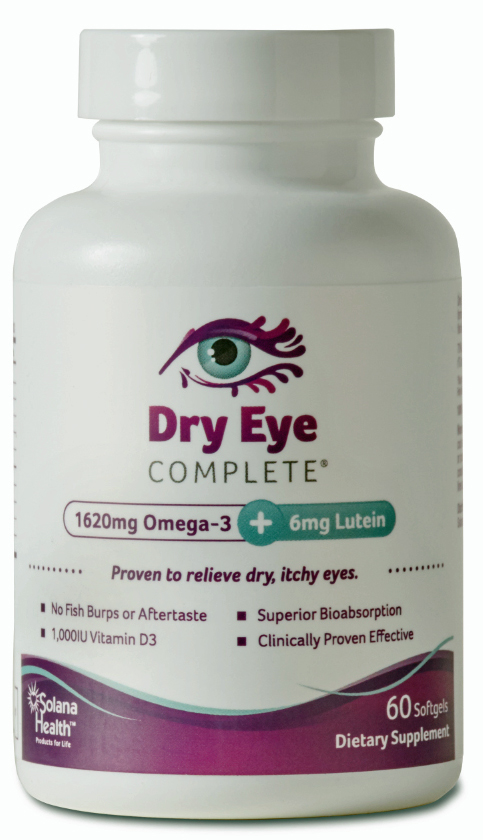Keratitis is a condition that includes inflammation of the cornea – the dome-shaped clear tissue that covers the iris and pupil at the front of the eye. This is caused by a number of different things, from bacteria and viruses, to parasites and fungus. Non-infectious keratitis is often caused by a minor injury, or it may occur if you wear your contact lenses for too long. Frequently, it occurs as a complication of dry eye syndrome. If you have symptoms of keratitis such as a dry, gritty sensation, or redness in the eye, then you should make an appointment with your doctor as quickly as possible. With prompt treatment and attention, most mild to moderate cases of keratitis can be rectified without any lasting damage. However, if the situation is left untreated, a severe infection can lead to complications that may cause permanent vision loss.
Why Keratitis Happens
The most common cause of keratitis is injury or infection, but this eye issue may develop for a range of other reasons. Viral, fungal, parasitic and bacterial infections may cause this condition, and an infectious keratitis can happen after an injury to the cornea. However, an injury may also lead to inflammation of the cornea without the presence of a secondary infection.
Viral keratitis can be quite a common condition, and may occur as a result of numerous different viruses including:
- Adenovirus – a primary cause of infections in the respiratory system
- Herpes simplex – the same virus responsible for causing cold sores
- Varicella zoster – another form of herpes virus that is associated with shingles and chickenpox
Bacterial keratitis, on the other hand is often far less common than viral keratitis, and fungal or parasitic keratitis is almost never seen within developed countries.
Infectious and Non-Infectious Keratitis
Infectious keratitis will normally begin by affecting outer layers of the cornea. However, it is capable of moving further into the cornea, and therefore increasing the risk of impaired vision. A non-infectious keratitis is a feature of certain autoimmune disease such as Sjogren’s syndrome and rheumatoid arthritis, it is more commonly associated with dry eye syndrome, and the symptoms of dry eye.
Like many other dry eye complications, trauma to the front section of the eye through poorly-fitted contact lenses or surgery on the cornea can lead to keratitis. What’s more, people who wear contact lenses instead of glasses are often at higher risk of infectious keratitis, and lens wear should be stopped if a person suspects they may be developing an infection.
Signs and symptoms associated with both forms of keratitis include:
- Redness in the eye
- Pain in the eye or discomfort
- Excessive tears or other discharge from the eye
- Blurred or impaired vision
- Difficulty opening and closing eyelids
- Severe dryness in the eye
- Sensitivity to light
- A feeling of grittiness or the sensation of a foreign object in the eye
If you begin to notice any signs or symptoms that might indicate keratitis – even if you assume that it is simply a case of dry eye, it’s important to see your doctor straight away. Whether you are suffering from dry eye or something more serious, delays in treatment and diagnosis can cause serious complications.
Causes of Keratitis
Keratitis has a number of different potential causes, including dry eyes, infection, chemical or physical injury, and the onset of underlying illnesses or medical conditions. Some of the most common causes of keratitis include:
- Dry Eye. If you suffer from dry eye syndrome and leave the condition untreated for an extended period of time, then you might find that the issue develops into keratitis.
- If the surface of your cornea is scratched via injury, keratitis with or without an infection may result. A damaged cornea allows access to fungi and bacteria which can promote serious infection.
- A virus such as the herpes virus may lead to keratitis
- Contaminated water. Chemicals that may be found in swimming pools and other water sources may irritate or damage the delicate surface tissue of the cornea, leading to chemical keratitis. Usually, this issue only lasts for a maximum of a couple of hours.
Usually, if your corneas are healthy and exposed to parasites or bacteria, they will not become infected. However, if you have experienced a breakdown in the cornea surface as a result of any other factors, then your cornea may be vulnerable to infection. For example, keratitis is likely to happen if you’re wearing a poorly fitting contact lens.
Factors that Increase Keratitis Risk
There are a number of factors that might increase your chances of suffering from keratitis. For example:
- Contact lenses. Regularly wearing contact lenses can increase your risk of suffering from both non-infectious and infectious keratitis. This level of enhanced risk generally stems from not disinfecting lenses often enough, or wearing them for longer than recommended. Keratitis is often more common in people who use extended-wear lenses.
- Low immune system. If you have a particularly weak immune system due to certain medications or the presence of an underlying disease, you will be at higher risk of developing keratitis.
- Warm climates. If you are living in a humid or hot climate, your risk of keratitis is likely to be higher, particularly if you are regularly exposed to plant materials in the form of pollen and other irritants.
- Eye injury. If your cornea is damaged for any reason due to an injury or a previous illness, you will be more vulnerable to keratitis.
- If you have been using corticosteroids as a way of treating dry eye syndrome, then your risk of keratitis is heightened, and existing keratitis symptoms can be worsened.
Diagnosing Keratitis
Because many of the symptoms of dry eye and keratitis are the same, you will probably struggle to recognize the presence of this condition through sight alone. Instead, you will need to visit a healthcare professional who will ask you questions about your vision, your symptoms, and your general health. An eye specialist or your doctor will use an instrument designed to magnify the surface of the cornea to look for tiny ulcers that may have been caused by viral infection. This is often what occurs when the keratitis is diagnosed by a virus such as herpes, and can appear more obviously after a dye is used to stain the cornea.
Your doctor is also likely to:
- Test your visual clarity and sharpness
- Examine your eye using a slit lamp
- Look at how well your pupil is capable of responding to light exposure
- Swab the inside of the eyelid gently in order to obtain a sample of any bacteria
Most patients find that keratitis caused by bacteria or a virus tends to improve quite quickly. Bacterial keratitis and herpes keratitis are treated using antibiotics and antiviral medication, and keratitis caused by other viruses usually gets better within a matter of days. What’s more, if your keratitis condition is caused by contact lens exposure, the duration will be brief so long as you remove the contact lenses.
Keratitis that is caused by certain parasites, autoimmune diseases, and prior injuries can require more complex treatment, and sometimes leads to the development of chronic conditions. In these circumstances, some patients experience permanent damage to the cornea despite treatment.
Preventing and Treating Keratitis
Typically, the best way to avoid the onset of keratitis is to avoid eye injury and dry eye by wearing appropriate sunglasses and eye gear when needed. If you are suffering from a cold sore, don’t put your fingers near your eyes, as this may help the infection to spread. Generally, routine hygiene with contact lenses, exposure to a balanced diet and frequent use of moisturizing eye drops and ointments to avoid dry eye can help to prevent keratitis.
In regards to treatment, the cure for keratitis will depend on the cause of the condition. For example, if the cornea has sustained a minor injury such as a scratch, no treatment will be necessary. However, an antibiotic may be prescribed to improve overall comfort. For noninfectious keratitis, if you have significant pain, you might be given prescription medication and could be asked to wear an eye patch until the condition gets better.
For infectious keratitis, treatment is more straightforward depending on the underlying cause of the infection. For example:
- Bacterial keratitis often requires the use of antibacterial eye drops for mild cases. If the infection is more severe, you may be asked to take oral antibiotics as well.
- Fungal keratitis is often treated using oral antifungal medication and antifungal eye drops.
- Viral keratitis can be treated using antiviral eye drops and oral antiviral medications. These medications may not be able to eliminate the virus completely in some circumstances, and the problem may reoccur.
- Acanthamoeba keratitis – a condition that is caused by tiny parasites – is often more difficult to treat. While antibiotic eye drops can be helpful, some infections of this nature are resistant to most forms of medication.
If the keratitis you are suffering from will not respond to medication, or leads to permanent eye damage, your doctor may recommend a cornea transplant. In most circumstances, artificial tears used for the purpose of lubrication can be quite effective at managing keratitis that occurs as a result of ocular dryness.
Linking Keratitis and Dry Eye
If your keratitis symptoms are caused by dry eye syndrome, your doctor may perform a Schirmer test, wherein a small strip of paper is inserted into the corner of each eye to measure moisture. Because there is not always a permanent cure for dry eye syndrome, the goal of most treatments will be to provide sufficient moisture to the eyes that symptoms are relieved. In most circumstances, this simply involves using artificial tears and lubricating ointments
Resources and References:
- What Is Keratitis? – Comprehensive information about keratitis and the different forms. (American Academy of Ophthalmology)
- Dry Eye Disease and Microbial Keratitis: Is There a Connection? – Study regarding the connection between dry eye disease and microbial keratitis. (NIH.gov)
- Keratitis – Basic facts and information about keratitis (MedicineNet.com)

